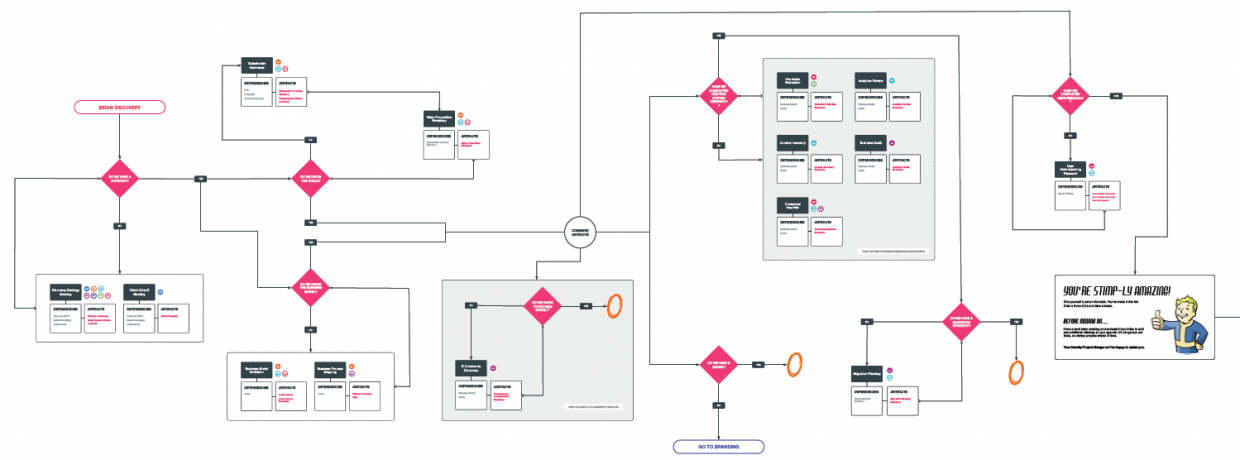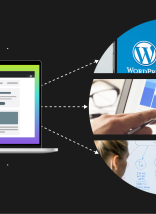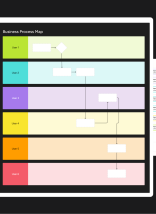Let’s imagine you have a business website or application you need built. In this case, we’ll say it’s a corporate marketing site to inform services you provide, generate customer leads, and promote job openings for prospective employees. Your staff isn’t technical, so you go to a vendor to have this site built. Some agencies may dive right in, saying, “Sure, got it. We’ll go build it now.” No questions, no research, just build the site and deliver it as soon as possible. What could go wrong?
A good digital partner understands a website is more than just features. Features may be what is being built, but it doesn’t answer why. (“Why” may sound like a superfluous question, but see Randy Earl’s article Are You Looking at the Trees or the Landscape? on the power of this question.) Take promoting job openings from our example of the corporate marketing site. Is your company trying to attract the top talent in the area? In the country? Or, have you had an influx of funding in order to grow extremely quickly? Knowing your company’s goals can heavily influence both the features and the visual design. Maybe you need a classy screening tool to get only top talent, or maybe you need a pay-per-click campaign to heavily promote a warm and welcoming job listing page.
Who is browsing the site also has a large impact. When trying to portray your brand and acquire leads, are you targeting millennials or CEOs? Maybe they’re millennial CEOs? In our example, we’ve already identified new customers and employee prospects as two different user groups. Shouldn’t the vendor building your site understand these groups in order to try and appeal to both?
Great Projects Begins with Research
At Atlantic BT, the first “D” in our 5D Process for projects is Discovery. (The other four phases are Design, Development, Deployment, and Delight; stay tuned for more posts on each.) This phase starts with research, and a primary goal is to answer these questions of what, why and for whom. Armed with an understanding of company goals, requested features, and the target audience(s), we can begin creating a comprehensive strategy for a successful website.

The research half of our Discovery Workflow
So you’ve chosen your digital partner, and you’re assigned a discovery team. What should you expect from their research (which is a broad term, so could mean anything.)? Here are some methods Atlantic BT uses in discovery.
This list isn’t comprehensive, as a well structured discovery process is flexible. We only use methods that will add value and understanding to your project, and new information could always change that direction. Some methods, such as the content inventory, are only applicable if we are migrating or redesigning an existing website.
Stakeholder Interviews
Stakeholder Interviews are simple, semi-structured interviews with key members in the client organization; typically members of the executive team and any closely related functional management. These interviews focus on high-level requirements and business goals, and generally avoid technical specifics of features, functionality, content, or any other detailed aspects of a solution. The objective at this level is to focus on defining the need, not the solution. This information helps determine further steps in the discovery process, and is useful material for the entire project.
Lean Canvas
The Lean Canvas is a one-page business model diagram which summarizes the key elements of a comprehensive business plan. It focuses on problems, solutions, key metrics, and competitive advantages. This workshop is instrumental for new product development, especially entrepreneurial ventures. This method enables us to identify opportunities in multiple aspects of the business process where we can help the client to leverage technology to achieve their vision for success.
Content Inventory
A content inventory is the process and result of cataloging and organizing the entire contents of a website. It functions as a quantitative analysis of the site, answering the question of “What is there?” With a full inventory, we can better understand the breadth, depth, and general volume of information on a site, as well as existing technical issues, configurations, and functionality. This inventory can be the basis of a follow-on content audit, utilized for information architecture, content migration and general digital strategy of a new site.
Analytics Review
An analytics review is an opportunity to explore the existing web analytics data of a client’s current site or application. The objective of this review is to aid other departments with critical data points to better understand the existing architecture, traffic patterns, trends, outliers, and usage points of the site. Results can help reveal hosting and architecture needs, identify user groups, or provide guidance in the content strategy.
Technical Audit
We designed our technical audit to identify existing programmatic functionality and configuration. It focuses on features which include database access, internal or 3rd party API communications, advanced forms, or other custom programming. The audit is not designed to specify which features will or will not be implemented in a new site. Instead, it works as a reference when discussing features to implement and when planning data migration.
User Understanding
User understanding research encompasses all activities/exercises that aim to improve insight into who the users of a given site/system are, and how they use or interact with the site/system. This research also helps validate (or refute) any preconceived notions or opinions around the user base. User research can take any number of forms, including persona workshops, contextual interviews, focus groups, or surveys. We choose the research techniques based on client need. The output of this research is greatly important to the rest of the project, and especially critical to methods such as information architecture, content strategy, and visual design.
Wrapping Up Research
Research is just the first half of Discovery. Now that you and your digital partner understand why you’re building a website, who it’s for, and have some requirements for what’s to be built, it’s time for strategy. Coming Soon: Continue your project journey with details about the second half of Discovery, Strategy.





